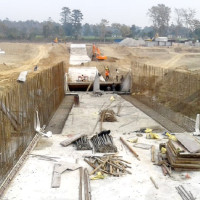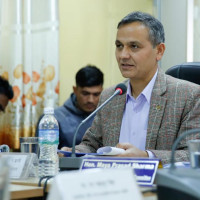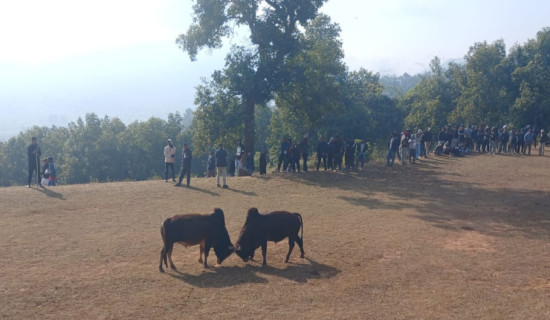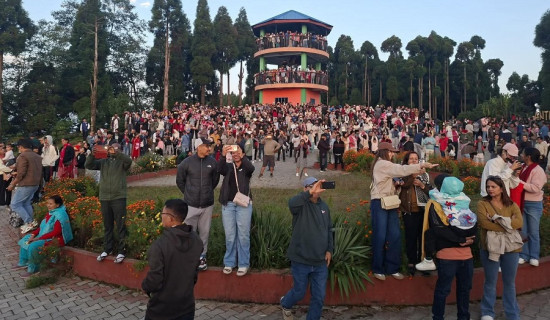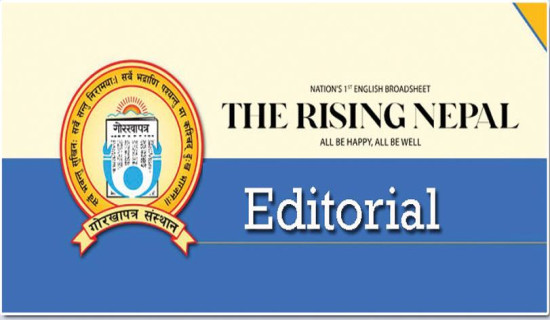- Thursday, 1 January 2026
Snow leopard conservation workshop
10% snow leopards of globe are in Nepal
By A Staff Reporter,Kathmandu, Apr. 26: A three-day International Snow Leopard Conservation Workshop began in Kathmandu on Friday, bringing together experts, officials and conservationists from snow leopard range countries to promote collaborative efforts for the protection of this elusive high-mountain predator.
Inaugurating the workshop, Minister for Forests and Environment, Ain Bahadur Shahi Thakuri, highlighted the ecological significance of the snow leopard, often referred to as the “God of the Mountains.”
“The snow leopard is the first indicator of a pristine Himalayan ecosystem,” Minister Thakuri said.
Nepal recently completed its first comprehensive nationwide snow leopard survey, estimating the population at 397 individuals. This accounts for nearly 10 per cent of the global snow leopard population and it reflects our strong commitment to their conservation, he said.
Minister Thakuri said that the snow leopard’s elusive and shy nature makes direct observation difficult. “However, with advancements in tools and technologies, such as camera traps and DNA analysis, we are now better equipped to monitor their lives and behaviours,” he added.
The Minister stressed that conservation should not be limited to numbers alone. Nepal has developed a long-term strategy through its new Snow Leopard Conservation Action Plan (2024–2030). The estimated cost for implementing the action plan is around Rs. 1.77 billion (around USD 13 million).
“Our data shows that 42 per cent of the snow leopard's habitat lies outside protected areas,” he said. “Therefore, our action plan prioritises conserving these areas, reducing human-wildlife conflict, preventing poaching and promoting research and conservation through local community participation, especially in previously neglected landscapes.”
The workshop aims to promote experience sharing and collective learning to strengthen community-based and whole-of-society approaches for peaceful human-snow leopard coexistence.
During the technical session, Deputy Director General of the Department of National Parks and Wildlife Conservation (DNPWC), Bed Kumar Dhakal, presented Nepal’s snow leopard conservation efforts and highlighted trans boundary initiatives.
Dr. Xueyang Li of China shared insights into the methodological and management framework behind China’s pioneering snow leopard assessment.
Dr. Muhammad Ali Nawaz from Pakistan discussed the role of science, technology and stewardship in the Himalaya-Karakoram highlands.
Dr. Alexander Karnaukhov of Russia presented an update on the current status of snow leopards in the Russian Federation.
Dr. Chiranjibi Prasad Pokharel, Director at NTNC, discussed the use of digital tools and community-based monitoring to promote human-snow leopard coexistence.
Professor Dr. Lu Zhi of Peking University stressed the importance of transboundary cooperation for effective snow leopard conservation.
Director General Badri Raj Dhungana from the Department of Forests and Soil Conservation spoke about Nepal’s integrated conservation approach.
Rajendra Prasad Mishra, Secretary at the Ministry of Forests and Environment, elaborated Nepal’s policies for conserving this elusive species.
NTNC Member Secretary Dr. Naresh Subedi shared NTNC’s conservation initiatives and stressed the importance of addressing human-wildlife conflict as a national agenda.
Professor Yadvendradev Vikramsinh Jhala of India presented on landscape-scale status monitoring of snow leopards and their prey in the Ladakh region, sharing India’s approach to snow leopard research.
A group discussion was also held to identify key challenges in snow leopard conservation across the region, said Gobinda Prasad Pokharel, Conservation Officer at NTNC. Participants stressed the importance of conflict mitigation, adequate resource allocation, technology transfer and stronger transboundary collaboration, he added.

.jpg)


